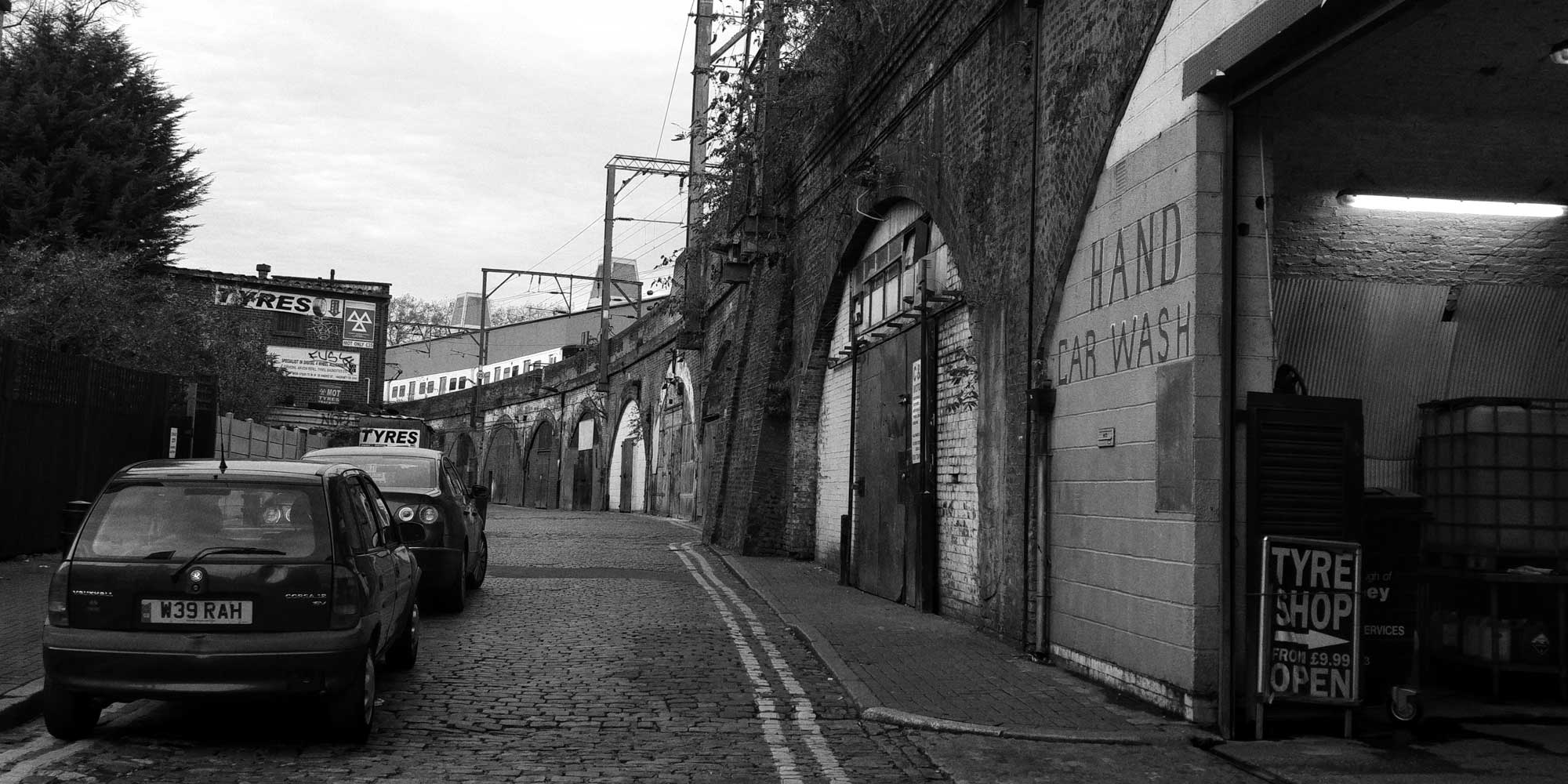Sunday 13 May, 2018
For the past two weeks I have eaten the two cheeses that were maturing in the fridge. On the left is the ‘white’ cheese, which had a Cheddar depth and texture. On the right is the ‘blue’ cheese. This didn’t really taste like a blue and had a tart flavour and a more crumbly texture. You can see where the blue veins tried to creep through but didn’t succeed. Regardless, I preferred this one.

They looked good on the cold plates of food we choose for dinner on many nights. Those and the burratas from Gallo Nero are always popular options.

On Friday I made the trip into Spitalfields in search of photos and poutine. I’d been putting it off for weeks. I love the 67 bus route that takes me from Dalston and then before it hits Bishopsgate, turns along Commercial Street towards its Aldgate destination. It’s quieter than Bishopsgate and takes me to the more interesting views from Commercial Street.

Poutine is these days considered the national dish of Canada. Canadians may not agree but it’s certainly iconic. French fries are covered in cheese curds (never mature cheese) and the whole thing is doused in gravy. The curds stay more or less whole but some melt or become partially melted. It’s an artery-clogging treat, one I don’t have more than once a year.

On the corner of Wentworth Street at Commercial Street once a week you can find The Poutinerie stand. These guys make the real thing. Others merely imitate. They also attract quite a queue. I joined the back of it.

Paul, one of the owners, serves up the poutine in a cardboard carton. He tells me that they are doing well after those first difficult years. Now they are survivors, outlasting all the other food trucks in the areas they visit. A traditional poutine (meat or vegetarian gravy) will cost you £5, the one with rib meat will cost £8-10.

It’s a huge portion. I know I can’t eat it all but I’ll do my best. I try some of the Ribman sauce they are famous for. It’s spicy and delicious. All I can do is dig in and hope for someone to share it with next time, about year from now.

Balancing my poutine and my phone so I can still take photos I head down Toynbee Street. This street has an elaborate history in an area considered “the worst parish… inhabited mostly by a criminal population” consisting of “wretched streets and foul alleys full of houses that are desolation without and squalour within”.

Also on Toynbee Street there’s a row of derelict houses. I would look at these on many walks and think there was nowhere uglier in all of Spitalfields. Ironically, some years later, John told me that ancestors had lived here. (See John’s note below.) I wonder if they were still OK to look at then and not yet descended to the ugly mess they are now. They’ve stood derelict all the time I’ve seen them. There are great plans to regenerate this area so perhaps I will see them gone one day.


From here I headed into Spitalfields Market hoping to find mugs for Prince Harry and Meghan Markle’s wedding – a request from my friend, Judy. I looked and looked and didn’t find any. Not ready to give up quite yet. Spitalfields Market is changing so much now. Gone are the crowded, independent merchants’ stalls and, in their place, modern modular units = stark, clean, and missing the character of the old market. Everything changes.


What does remain outside of the market is a lovely street marker. If you look around the area you’ll see many of these roundels, each depicting what was going on in the vicinity. This one shows fruit which would have been sold here originally.





Notes from John about my ancestral connections with Spitalfields (many!):
Regarding your blog and Toynbee Street (originally Shepherd Street):
In and around 1881 the Willings, both from Amsterdam, who I think had been in England since their mid teens, lived at 13 Shepherd Street. If I understand the history of the area correctly, the buildings were put up about 1850 with six floors. Some were removed for the Holland Estate, an early council development in the late 1920s. In 1963 the top floors were removed from the remaining buildings, perhaps because they were not structurally sound at that height. The Willings, when they first lived there, were in their early twenties. Their address when they married in Princes (later Princelet) Street synagogue in September 1880 was on neighbouring Freeman Street. Sophie was born in 1888 on neighbouring Tilley Street. All these streets were in the Tenterground, which had a large Dutch immigrant population, and had only one entry through a large stone arch at White’s Row.
And remember that our great grandfather Charles Simmons sold produce at Spitalfields Market. At that time it hadn’t expanded to the west yet, so if we divide the present space into a west, middle, and east section, his stall would have been in the east one.
